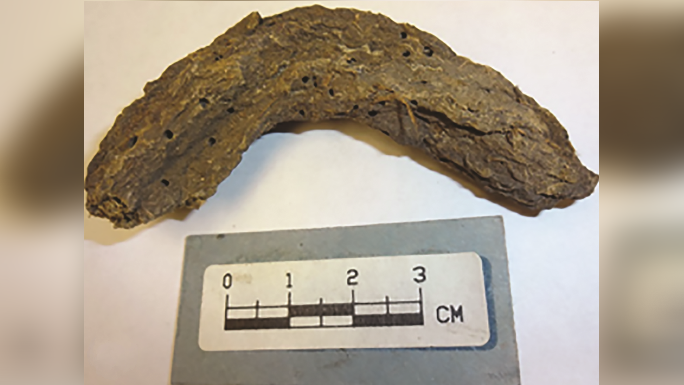An extraordinary discovery has taken the paleontological world by storm: the first-ever preservation of soft tissues from a giant ichthyosaur. A remarkable fossil, dating back 183 million years, reveals never-before-seen features of the Temnodontosaurus ichthyosaur, providing a stunning glimpse into its life as a top predator in the Jurassic seas. Published in Nature, this groundbreaking find not only opens new windows into the ancient past but also redefines how we understand prehistoric marine reptiles. The discovery is set to revolutionize the way scientists view ichthyosaurs, challenging decades of conventional wisdom about these powerful, ancient hunters.
The First-Ever Soft Tissue Fossil of a Giant Ichthyosaur
According to Dr. Dean Lomax, a leading paleontologist and study co-author, the fossil represents a monumental discovery in understanding ichthyosaur biology. The flipper reveals remarkable details, such as a serrated trailing edge reinforced with cartilage structures never observed in any living or extinct animal. These unique features have been termed chondroderms, and they play a crucial role in understanding the ichthyosaur’s swimming mechanics and hunting abilities.
Dr. Lomax recalled his reaction upon first viewing the fossil: “Honestly, when I first saw this specimen in person, laid out on the kitchen table, no less, at Georg’s house (the collector), I was stunned into silence. That says a lot about me (and this fossil), considering that I usually never shut up talking about fossils. But the extremely remarkable details, not only of the skin, but the striped pattern, the incredible winglike shape and those ‘spike-like’ structures – that we come to term chondroderms – reveal features that no other human had seen before.”
The Chondroderms: Silent Swimmers and Stealthy Hunters
The most striking aspect of the fossil’s preservation is the discovery of the chondroderms. These unique cartilaginous structures along the flipper’s trailing edge are believed to have played a critical role in the ichthyosaur’s hydrodynamics, helping it swim with minimal sound. This would have made the ichthyosaur an extremely effective and stealthy predator, capable of ambushing prey without alerting them to its presence. The chondroderms are thought to have provided hydroacoustic benefits, enabling the ichthyosaur to move through the water with little resistance and avoiding detection by its prey.
Dr. Lomax elaborated on the significance of these findings: “The three of us stared at this fossil in awe. One of those goosebump-type moments where for that split second you just know that this fossil is going to revolutionize the way we look at and reconstruct these creatures. Remarkable for a group of ancient animals that we’ve known for over two centuries. It is the sort of discovery that 10-year-old ‘Dino Dean’ could have only ever dreamed of.”
Implications for Understanding Ichthyosaur Behavior
The implications of this discovery are profound. Not only does it shed light on the anatomy of the ichthyosaur, but it also opens new avenues for understanding its behavior and ecological niche. The chondroderms and their ability to aid in silent swimming suggest that the ichthyosaur was an apex predator in its environment, relying on stealth to capture its prey. This is a novel insight into the hunting strategies of ichthyosaurs, which were previously thought to rely primarily on their large eyes to hunt in the dimly lit depths of the ocean.
Dr. Lomax suggests that this discovery might have broader implications for our understanding of ancient marine reptiles. “There are a couple of questions that we hope this fossil will answer, or at least begin to unpack,” he said. “One, particularly, is whether these structures – and this unique behavior – were restricted to this ichthyosaur, other ichthyosaurs, or even other ancient marine reptiles. Or, in fact, whether similar structures evolved in other ancient creatures, but we’ve just not found them yet.”
This opens up the possibility that other ancient creatures, possibly predatory marine reptiles from different periods, may have developed similar features for stealth and ambush hunting. The discovery of the chondroderms could ultimately help connect ancient species in ways that were previously unimaginable.
What This Discovery Means for Ichthyosaur Origins
In addition to altering our understanding of ichthyosaur behavior, this discovery could also have important implications for the origins of these fascinating creatures. For centuries, the evolutionary origins of ichthyosaurs have remained a mystery, with debates about how and when they adapted to life in the ocean. The presence of chondroderms in this fossil could provide critical clues about the evolutionary pathways that led to the ichthyosaur’s specialized adaptations.
Dr. Lomax speculated on the broader implications: “All of this, and indeed these structures, also open up further details about ichthyosaur origins. The origins of ichthyosaurs have remained a bit of a mystery, but perhaps these unusual structures might help us to unravel similar features in more ancient creatures, perhaps providing an archaic link. Time will tell.”
This exciting development paves the way for future research into the evolutionary history of marine reptiles, with the potential to reveal new links between different species from the Mesozoic era.
Source link


